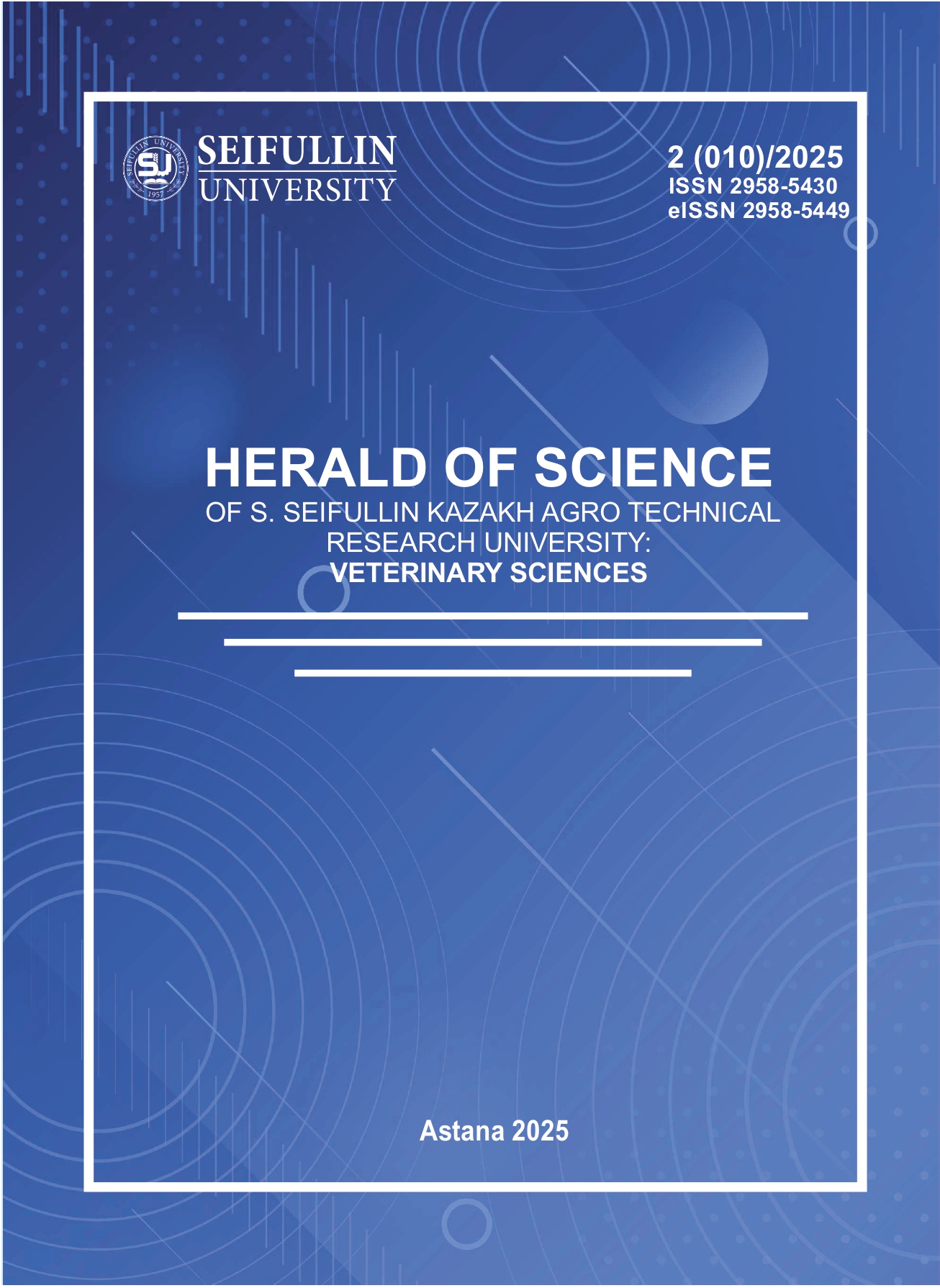On the distribution of botfly diseases of horses and camels in the Atyrau and Kyzylorda regions of the Republic of Kazakhstan
DOI:
https://doi.org/10.51452/kazatuvc.2025.2(010).1876Keywords:
botflies; parasites; Equidae; Camelidae; gasterophilosis; cephalopinosis; rhinoestrosis.Abstract
Background and Aim. Botfly larvae parasitize horses and camels, adversely affects animal health and productivity, and can cause death. This raises a need for systematic control of some botfly species. Botfly parasitism causes significant economic damage in Western Kazakhstan, where camel and horse breeding are prominent.
Materials and Methods. The study covered the Kazaly and Aral districts (Kyzylorda region), and the Makhambet, Isatay, Kurmangazy districts (Atyrau region). Field research was conducted in the Kyzylorda region in May and September, 2024, and in the Atyrau region in June, July and September. During the study, a total of 25 camels and 23 horses were examined in the Kyzylorda region; 41 camels and 37 horses were examined in the Atyrau region. The ante-mortem diagnoses of camel cephalopinosis and horse rhinoestrosis were established endoscopically.
Results. Botfly larvae were found in the nasal passages of the examined camels and horses and in the stomachs of the horses. In the Kyzylorda region, no cephalopinosis cases were detected among camels in the spring; however, the prevalence increased to 36% in the autumn. In the Atyrau region, there were no cases of cephalopinosis in July, but its prevalence rose to 17.1% in the autumn. No rhinoestrosis cases were detected in the Kyzylorda region. In the Atyrau region, there were no occurrences of the disease in June; however, 9.5% of horses already had rhinoestrosis in September. The prevalence of gasterophilosis among horses of the Kyzylorda region remained at 33.3% in the spring and autumn. In the Atyrau region, the prevalence of gasterophilosis was 20% in the spring, rising to 100% in the autumn.
Conclusion. Cephalopina titillator larvae were found in camels in September. Rhinoestrus sp. larvae were detected in horses in September, while Gasterophilus intestinalis was observed in May, June and September. Adult botflies were active in September.

